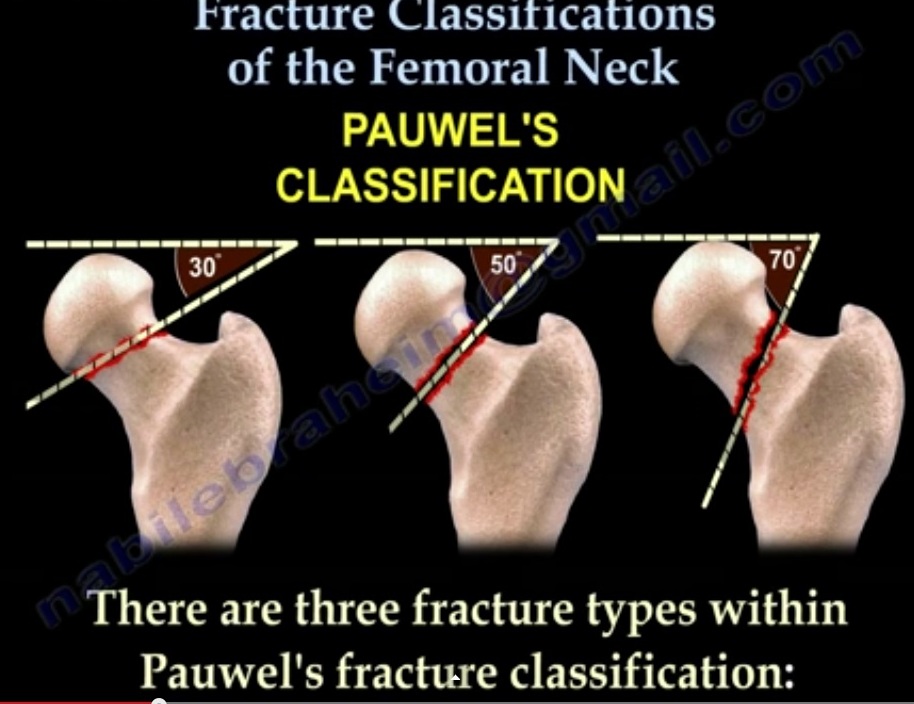Garden classification
- Type I:Incomplete and impacted in valgus
- Type II:Fracture is complete and nondisplaced on at least two planes (anterior & lateral).
- Type III:Complete fracture and partially displaced. Trabecular pattern of the femoral head does not line up with the acetabular trabecular pattern.
- Type IV:Completely displaced with no continuity between the proximal and distal fragments
Pauwel’s classification
There are three fracture types within Pauwel’s classification:
- Type I:Type I has an obliquity ranging from 0 to 30 degrees.
- Type II:Type II has an obliquity ranging from 30 to 50 degrees
- Type III:Type III has an obliquity of 70 or more degrees.
- The more vertical orientation of the fracture, the higher the risk of nonunion and osteonecrosis.
- The more displaced the fracture, the more disruption of the blood supply and chance of avascular necrosis and nonunion.
- Avascular necrosis may occur in 20-25% of displaced fractures.
- Nonunion may occur in about 25% of displaced fractures.
Treatment
- Nondisplaced fracture: Screw fixation. Nondisplaced fracture may become displaced
- Important to fix the fracture emergently in young patients before the fracture becomes displaced.
Displaced fracture-younger patients EMERGENCY
- Do closed reduction and screw fixation
- If closed reduction fails, do open reduction and screw fixation utilizing the Watson Jones approach.
Displaced fracture older patients
- Screw fixation in the elderly has a higher incidence in failure of fixation and reoperation. Do not do screw fixation.
- High functional demand patient: Do total hip arthroplasty
- Total hip is the procedure of choice especially if there is pre-existing rheumatoid or degenerative arthritis.
Elderly low demand patient
- Unipolar or bipolar
- Cemented or uncemented
- In rare cases, excision of the femoral head can provide alternative in high-risk patients.

Leave a Reply